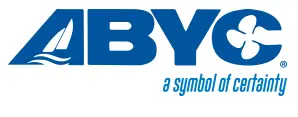ABYC: American Boat and Yacht Council

ABYC, American Boat and Yacht Council, is a not-for-profit membership organization that has been developing and updating the safety standards for boat building and repair for 50 years. ABYC is actively involved with the International Organization for Standardization (ISO) and is a leader in education for the marine industry, as well as certification programs for marine technicians.
Below are ABYC's best-selling standards. To find additional standards, please use the search bar above.
ABYC E-11-2018
AC & DC ELECTRICAL SYSTEMS ON BOATS
This standard is a guide for the design, construction, and installation of alternating current (AC) electrical systems and direct current (DC) electrical systems on boats.
ABYC E-30-2018
ELECTRICAL PROPULSION SYSTEMS
This standard is a guide for the design, construction, and installation of alternating current (AC) and direct current (DC) electrical systems on boats for the purpose of propulsion.
ABYC E-30-2021
Electric Propulsion Systems (Formerly TE-30)
This standard addresses the design, construction, and installation of alternating current (AC) and direct current (DC) electrical systems on boats for the purpose of propulsion.
ABYC H-41-2009
REBOARDING MEANS, LADDERS, HANDHOLDS, RAILS AND LIFELINES
This standard is a guide for the design, construction, and installation of reboarding means, ladders, handhold devices, grab rails, rails, lifelines, and slip resistant surfaces.
ABYC A-28-2019
Galvanic Isolators
This standard applies to the qualification and installation of galvanic isolators used on boats equipped with alternating current (AC) shore power systems operating at frequencies of 50 or 60 Hz, and less than 600 V, wired in accordance with ABYC E-11, AC & DC Electrical Systems on Boats and ABYC TE-12, Three Phase AC Electrical Systems on Boats.
ABYC A-28-2019
Galvanic Isolators
This standard applies to the qualification and installation of galvanic isolators used on boats equipped with alternating current (AC) shore power systems operating at frequencies of 50 or 60 Hz, and less than 600 V, wired in accordance with ABYC E-11, AC & DC Electrical Systems on Boats and ABYC TE-12, Three Phase AC Electrical Systems on Boats.
ABYC A-4-2018
FIRE FIGHTING EQUIPMENT
This standard is a guide for the design, construction, and installation of portable handheld fire extinguishers and fixed fire extinguishing systems on boats.
ABYC C-1500-2019
Ignition Protection for Marine Products
This standard applies to the test methods for determining ignition protection but is not to be considered a standard that will determine the acceptability of a product or component for use in marine service. EXCEPTIONS: 1. Explosion proof or intrinsically safe equipment as required by the US Coast Guard and applied to US Coast Guard inspected vessels or as defined in the National Electrical Code, ANSI/NFPA No. 70. 2. Ignition protection procedures for products or components that may operate in hydrogen and air mixtures. 3. Mechanisms of ignition from external sources, such as static electricity, lightning, or other factors not related to the apparatus under test. 4. Apparatus based on the use of high voltage electrostatic principles. 5. The deterioration of external wiring. 6. Connections installed in accordance with applicable installation standards.





